Location: Kelso, Scottish Borders, Lowlands of Scotland
kind of building: medieval priory
today: open to public though mostly ruined with only very little parts remaining intact
public transport: buses to Kelso from Galashiels and many other border towns
scheduled monument: yes
managed by: Historic Environment Scotland
entrance fee: £ 0
opening times (subject to changes): all year visible from the outside; April to September daily 09.00-17.30; October to March Wednesday to Sunday 9.30-16.30
directions: Kelso Abbey – Google Maps
Kelso Abbey is one of the famous 5 Scottish Border Abbeys, located on the now in fame growing Border Abbey Way. Overlooking what was the royal burgh of Roxburgh once, the abbey dates back to the 12th century and was founded by David I of Scotland, like all the Border Abbeys. Today what is left of Kelso Abbey is not more than a ruin of the former Western Crossing and parts of the Infirmary.
With its location, the abbey was an important one, being close to the southern centre of the developing Scottish Kingdom, making it a powerful abbacy, one of the most powerful in Scotland and most certainly the most powerful in the Scottish Borders.
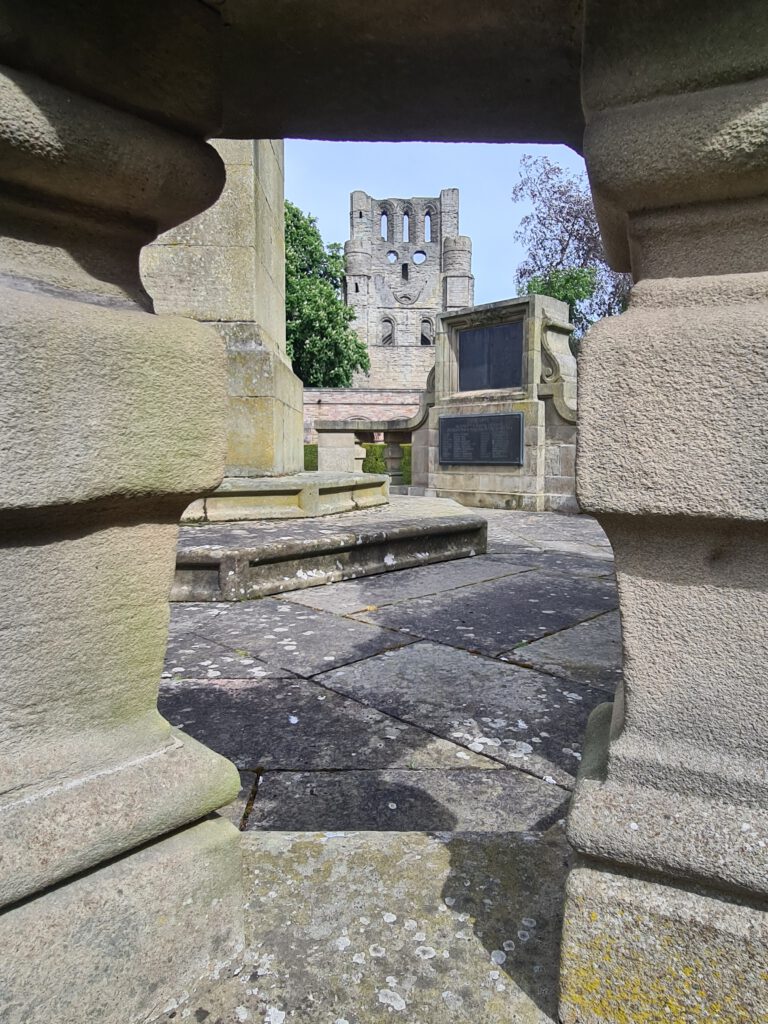
The monks originally were located in Selkirk Abbey but moved to Kelso in 1128. As most of the other Border Abbeys as well, Kelso Abbey was disestablished in 1559 after being pretty much demolished by the English forces before.
The former monks of Selkirk Abbey were of the Tironesian order, coming from France, they stood under the patronage of David I. The move to from Selkirk to Kelso wasn’t without reason, with nearby Roxburgh developing to become a centre for trading and the administrative centre of Southern Scotland Kelso was the location for a border abbey.

Being dedicated to The Blessed Virgin and Saint John, the first notable big progress was finished around 1143, with further development still going on, only nine years later the abbey saw its first big funeral, that of David’s son, Henry, Earl of Northumbria who died in 1152, being buried at the abbey.
Soon being one of the wealthiest and grandest abbeys in Scotland, Kelso Abbey seemingly never stopped growing, getting its vast estates to be the source of an amazing income. After having lost Northumbria to the English during the reign of William I, Roxburgh turned into a constant target for attacks during the Wars of Scottish Independence.
Being under English occupation from time to time, in 1299 Kelso Abbey was under an English appointee, but it still kept its Scottish identity. This led to a lot of damage throughout the years which was always repaired by the monks.
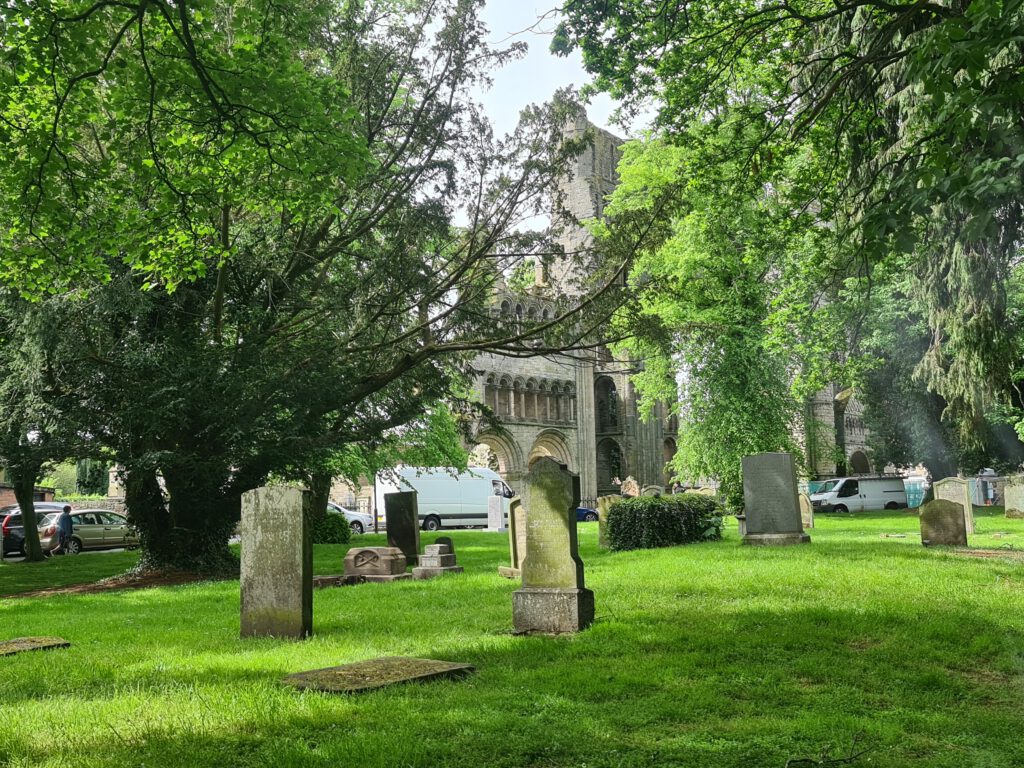
Like all of the Scottish Borders, Kelso Abbey too has a partly bloody history, mostly of events happening close by. Famously, in 1460 James II got killed while securing the repossession of Roxburgh Castle. This sad event was followed by a happier one, the coronation of the infant King James III at Kelso Abbey.
Between the coronation of James III and 1513 the control of the area was stable, but it did break down again with around 1517 suffering from English attacks again. This suffering went one for quite a couple of years, on and off like the suffering of the whole Scottish Border region. The English did a lot of damage to the abbey, much of which happened under the orders of king Henry VIII who targeted Melrose, Dryburgh, Jedburgh and Kelso Abbey during the Rough Wooing. The initial goal was to convert Kelso Abbey into a bastion fort which never happened.
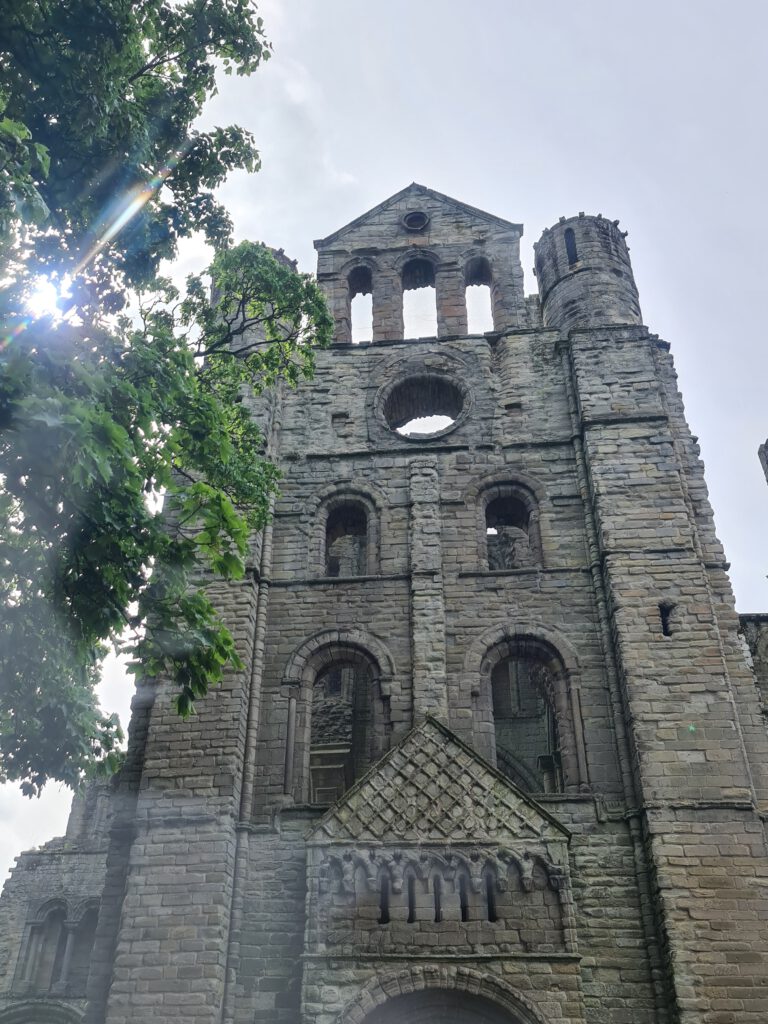
The suffering of Kelso Abbey did not stop there though, the Rough Wooing was followed by the monastic disestablishment in 1560, the Scottish Reformation. By 1587 the abbey and its order were officially declared derelict. James VI was visiting what was left of the abbey only three years later.
There wasn’t much left at this point already, however, parts of the abbey were used as parish kirk between 1647 and 1771. Around that time the unused and destroyed parts of the abbey were dismantled, with the stones of course being used for building the developing town of Kelso.
The left-over parts of what once was Kelso Abbey were cleared away in 1805, left was only the west tower and the transept. Sadly it has to be mentioned that we don’t know for sure how the abbey once looked but evidence suggests that it was a mayor complex of buildings including two crossings.
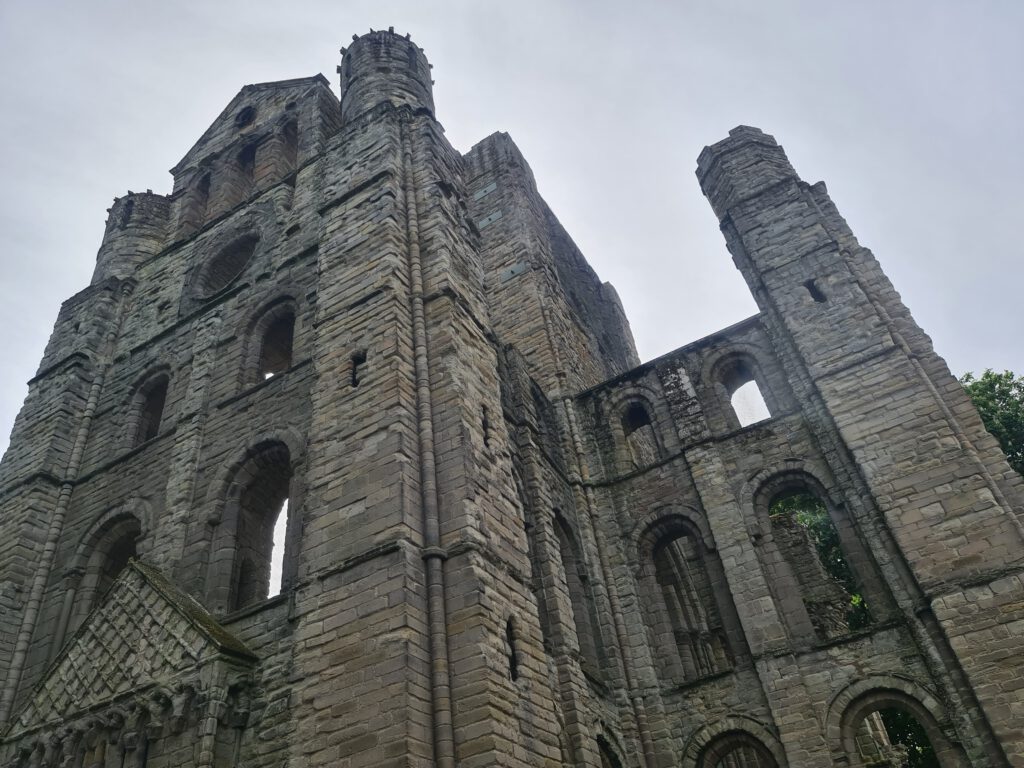
With towers thought to have been on the east and the west crossing. The eastern crossing and its tower are completely gone today and with them the high altar, which is thought to have been located in it.
During the 20th century the ‘Roxburghe Aisle’ was built onto the Abbey by the Dukes of Roxburghe. Several of the Dukes of Roxburghe are buried in the burial vaults alongside their family members.
All these destructions make Kelso Abbey the most destroyed of the four remaining Border Abbeys. But back in its time of glory its architecture features inspired other buildings, such as the western tower, which inspired towers like seen at Glasgow Cathedral and Jedburgh Abbey.

With the lack of structure left there is no wonder that there are many open theories and stories about what once was for sure or might have been. So, the only part left to tell the story of how rich the abbey once was embellished is the great western door, which external walls still carry some fine details, such as the raised lattice-patterned gable.
But there are more stories, such as what happened with the bells?! They are said to have been hidden in the Tweed, simply to stop them from being stolen by the raiding English forces. To this day it is said that you can hear the bells ring on stormy nights and in times of trouble.
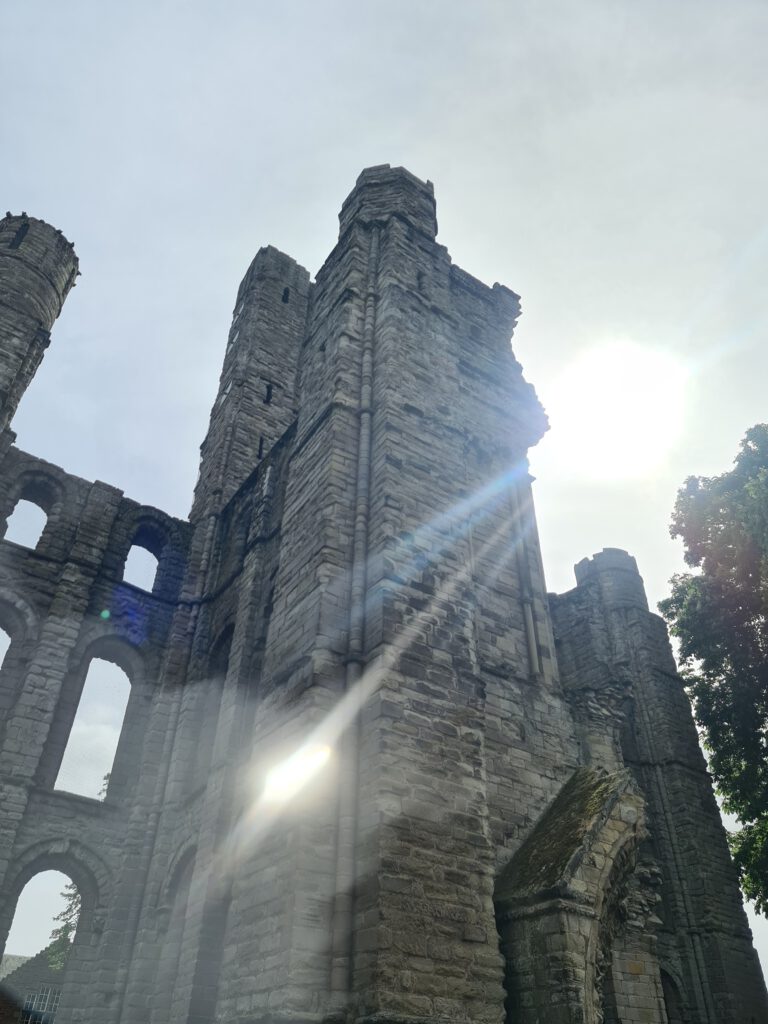
Unfortunately, when I visited Kelso, the abbey was closed up due to masonry work, which was unfortunate for me but in general very good. It helps to keep places safe for people to visit and the great thing about Kelso Abbey most certainly is that you don’t need to get inside to see most of what is left, with the exception of the details but still you can see most things.
Definitely a place you should visit, no matter if you are doing the Border Abbey Way or simply exploring the Scottish Borders, Kelso is a place you should have seen close up once in your life.
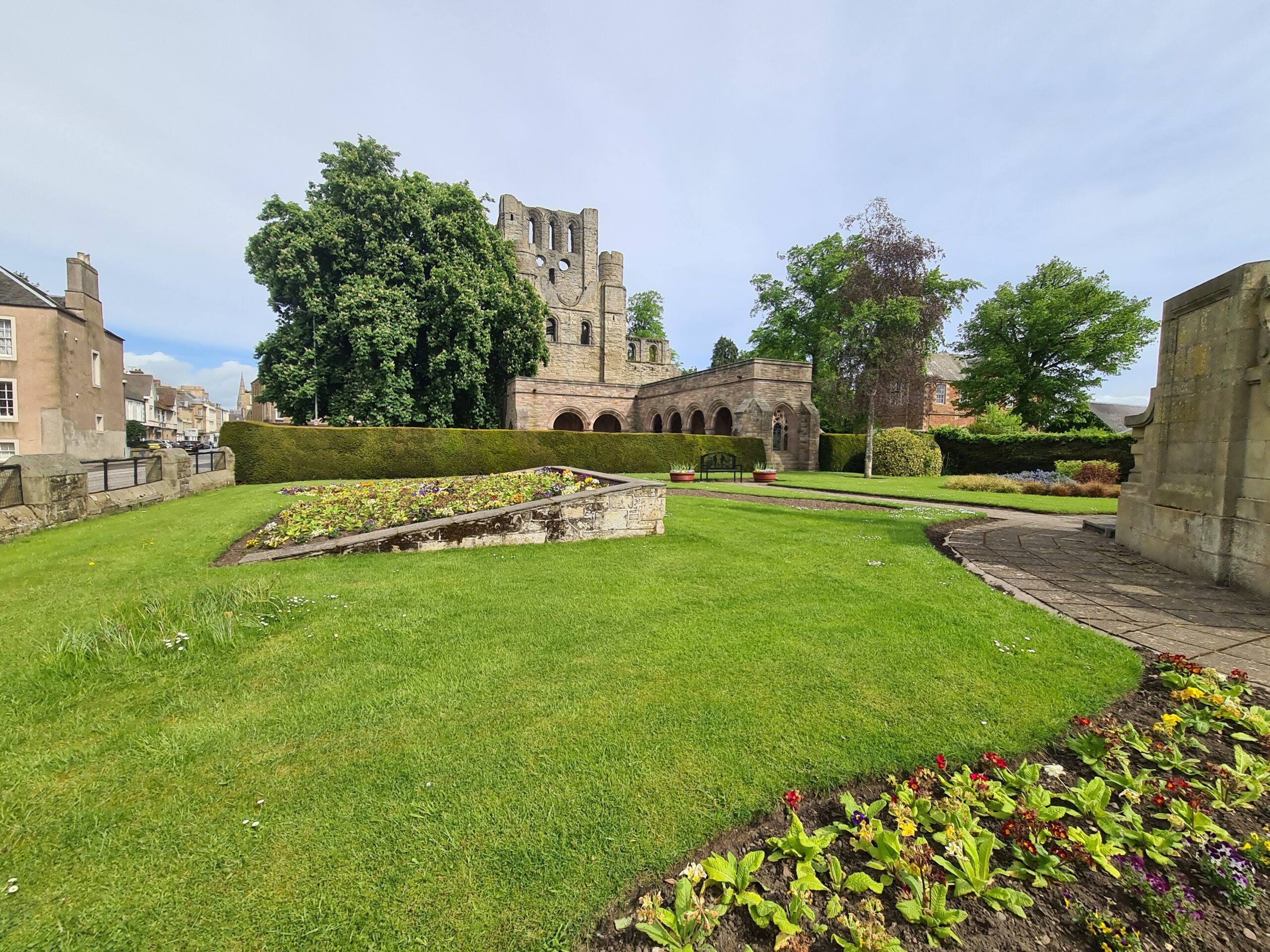
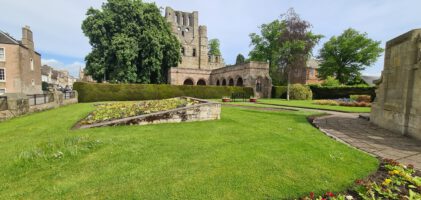
Pingback: River Teviot and Roxburgh circuit, Kelso – A scottish World